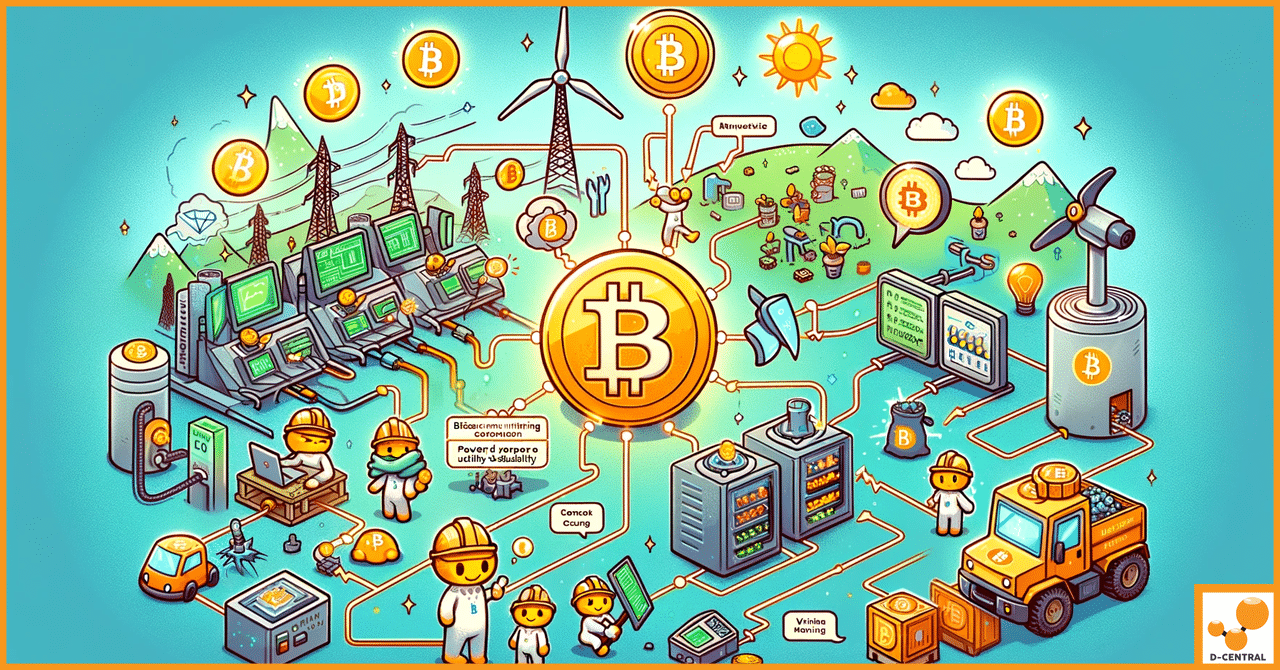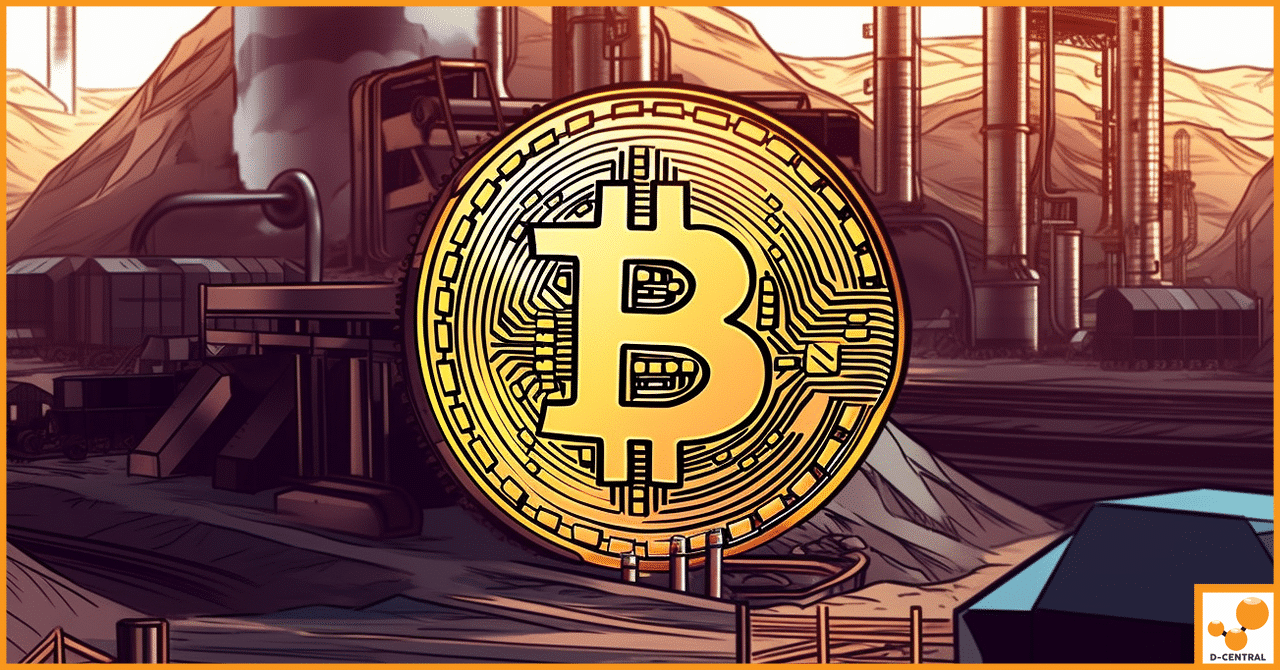
Bulletproof Your Bitcoin Mining: Expert Cybersecurity Strategies for Bitcoin Miners
Bitcoin mining stands at the heart of the cryptocurrency world, serving as the backbone of the Bitcoin network. This process
4479 Desserte Nord Autoroute 440, Laval, QC H7P 6E2

In the ever-evolving landscape of digital currencies, Bitcoin stands as a pioneering force, reshaping not just financial transactions but also impacting the broader energy sector. At the heart of this transformation is Bitcoin mining, a process that is as complex as it is crucial for maintaining and expanding the Bitcoin network. This mining process, however, is not just about creating new bitcoins; it’s increasingly becoming a significant player in the global energy landscape.
Bitcoin mining involves solving complex mathematical problems to validate transactions on the Bitcoin network, a process that requires substantial computational power and, consequently, a significant amount of electricity. This intersection of digital currency and energy consumption has sparked a global conversation about the role of Bitcoin mining in the broader context of energy production, consumption, and sustainability.
Our approach is rooted in a deep understanding of both the technical and environmental aspects of Bitcoin mining. We recognize the importance of sustainable practices and are committed to exploring and implementing solutions that not only benefit our clients but also contribute positively to the energy sector. By integrating Bitcoin mining into the power grid, we aim to create a synergy that enhances the efficiency of both systems, paving the way for a more sustainable and economically viable future.
As we delve deeper into this topic, we will explore the intricate relationship between Bitcoin mining and the power grid, examining the challenges, opportunities, and innovations that lie ahead.
Understanding the integration of Bitcoin mining with power grids requires a fundamental grasp of both concepts. Let’s start by demystifying Bitcoin mining and then delve into the basics of power grid operations.
Bitcoin Mining Explained
Bitcoin mining is the backbone of the Bitcoin network. It involves the use of specialized computers, known as ASICs (Application-Specific Integrated Circuits), to solve complex cryptographic puzzles. This process serves two critical functions: it validates and secures transactions on the Bitcoin blockchain, and it releases new bitcoins into circulation, a process metaphorically akin to mining gold.
Each time a miner successfully solves a puzzle, a new block is added to the blockchain, and the miner is rewarded with a certain number of bitcoins. This incentivizes miners to contribute their computational power to the network. However, this process is energy-intensive. The ASICs consume significant amounts of electricity, leading to concerns about the environmental impact of Bitcoin mining.
Power Grids: An Overview
A power grid is a network for delivering electricity from producers to consumers. It includes power stations, transmission lines, substations, transformers, and distribution lines. Power grids must balance supply and demand in real-time, ensuring that the generation of electricity matches its consumption. This balancing act is crucial for preventing blackouts and maintaining the stability of the grid.
Grid operators use a mix of energy sources, from traditional fossil fuels to renewable sources like wind and solar. However, renewable sources are intermittent – the sun doesn’t always shine, and the wind doesn’t always blow. This intermittency poses a challenge for grid stability.
The Intersection of Bitcoin Mining and Power Grids
Bitcoin mining’s significant energy demand intersects intriguingly with the operation of power grids. On one hand, the energy-intensive nature of mining has raised concerns about its environmental impact. On the other hand, Bitcoin mining presents unique opportunities for grid management.
Miners are location-agnostic and can set up operations wherever electricity is available and affordable. This flexibility means they can be situated near renewable energy sources, potentially aiding in the consumption of excess energy that would otherwise go to waste. Moreover, Bitcoin miners can act as a controllable load. They can ramp up their energy usage when there’s surplus electricity and scale down during peak demand or when renewable sources are less available.
This potential for miners to act as a flexible load can aid in grid stabilization, especially in areas with high penetration of renewable energy. By integrating Bitcoin mining operations with power grid management, there’s an opportunity to create a symbiotic relationship that benefits both the Bitcoin network and the energy sector.
Bitcoin mining, often perceived solely as a power-hungry process, plays a surprisingly constructive role in the stabilization of power grids.
Contribution to Grid Stabilization
By acting as a flexible load and utilizing excess renewable energy, Bitcoin mining can play a pivotal role in the transition to a more sustainable and stable energy future. As the industry continues to evolve, the integration of Bitcoin mining with power grid management is poised to become an increasingly important aspect of global energy strategies.
The integration of Bitcoin mining with renewable energy sources presents a promising avenue for promoting sustainable energy practices. This section delves into the potential of Bitcoin mining in fostering the growth of renewable energy and discusses recent studies and findings that support this synergy.
Promoting Renewable Energy Sources
Recent Studies and Findings
The integration of Bitcoin mining with renewable energy sources offers a mutually beneficial relationship. It not only provides a steady and flexible demand for renewable energy but also aids in stabilizing the power grid, making renewable energy projects more viable and attractive. As the world moves towards a more sustainable energy future, the role of Bitcoin mining in this transition is becoming increasingly significant and beneficial.
The integration of Bitcoin mining with power grids is not just a technical endeavor; it has profound financial and environmental implications. This section explores the economic benefits of this integration and delves into its environmental and sustainability aspects.
Economic Benefits
Environmental Implications and Sustainability
The integration of Bitcoin mining with power grids presents a unique opportunity to enhance grid efficiency, generate economic benefits, and promote environmental sustainability. However, it is essential to balance these benefits with the need for responsible energy consumption and continuous innovation in sustainable mining practices. As the industry evolves, the focus on environmental stewardship and economic viability will be key to its long-term success and acceptance.
Integrating Bitcoin mining with power grids is a promising venture, but it is not without its challenges.
Main Challenges
Solutions and Innovations
D-Central Technologies’ Contributions
As a leader in the Bitcoin mining industry, D-Central Technologies is actively contributing to addressing these challenges:
While the integration of Bitcoin mining with power grids presents several challenges, innovative solutions and proactive approaches by companies like D-Central Technologies are paving the way for a more sustainable and efficient future in this field. Through continuous innovation and responsible practices, the Bitcoin mining industry can significantly contribute to the evolution of modern power grids.
As we have explored throughout this article, the integration of Bitcoin mining with power grids represents a significant step forward in the evolution of both the cryptocurrency and energy sectors. D-Central Technologies, at the forefront of this integration, is pioneering solutions that not only enhance the efficiency and sustainability of Bitcoin mining but also contribute positively to the stability and development of power grids.
The journey towards integrating Bitcoin mining with power grids is an ongoing one, filled with opportunities for innovation, collaboration, and growth. We encourage you to be a part of this exciting journey. Whether you are a seasoned miner, an investor in renewable energy, or someone interested in the future of cryptocurrency and energy, there is a role for you to play.
We invite you to explore the services and solutions offered by D-Central Technologies. Discover how our expertise can benefit your mining operations, learn about our innovative approaches to energy efficiency, and join us in shaping a more sustainable and efficient future for both Bitcoin mining and power grid management.
What is Bitcoin mining?
Bitcoin mining is the process of using specialized computers known as ASICs to solve complex cryptographic puzzles, which validates transactions on the Bitcoin network and releases new bitcoins into circulation.
Why does Bitcoin mining consume so much electricity?
Bitcoin mining is energy-intensive because the ASICs used to mine require substantial amounts of electricity to perform complex calculations quickly and continuously.
How does Bitcoin mining interact with power grids?
Bitcoin mining interacts with power grids by using electricity to power the mining operations. This interaction presents challenges and opportunities for grid management, especially in optimizing the balance between electricity supply and demand.
Can Bitcoin mining promote the use of renewable energy?
Yes, Bitcoin mining can promote the use of renewable energy by acting as a flexible load that can consume excess electricity, especially from intermittent renewable sources like wind and solar, strengthening the financial viability of renewable projects.
What is D-Central Technologies’ role in Bitcoin mining and power grids?
D-Central Technologies is a leader in the Bitcoin mining industry, providing custom solutions to enhance energy efficiency in mining, advocating for sustainable mining practices, and engaging in educational efforts regarding the benefits of integrating mining with power grids.
What are the economic benefits of integrating Bitcoin mining with power grids?
Integrating Bitcoin mining with power grids can lead to enhanced grid efficiency, cost savings, revenue generation from excess energy, and job creation alongside economic growth in related sectors.
What are the environmental benefits of Bitcoin mining with renewable energy?
Integrating Bitcoin mining with renewable energy can reduce the carbon footprint of mining activities and drive the adoption of renewable energy by providing a consistent demand for clean energy.
What are some challenges faced by integrating Bitcoin mining with power grids?
Some challenges include managing the high energy consumption and efficiency of mining operations, maintaining grid stability, navigating evolving regulatory and policy landscapes, and addressing public environmental concerns.
How does D-Central Technologies contribute to sustainable Bitcoin mining?
D-Central Technologies contributes by creating custom solutions such as Bitcoin Space Heaters, engaging in advocacy and education to inform stakeholders, and emphasizing the use of renewable energy sources for mining to promote sustainable practices.
DISCLAIMER: D-Central Technologies and its associated content, including this blog, do not serve as financial advisors or official investment advisors. The insights and opinions shared here or by any guests featured in our content are provided purely for informational and educational purposes. Such communications should not be interpreted as financial, investment, legal, tax, or any form of specific advice. We are committed to advancing the knowledge and understanding of Bitcoin and its potential impact on society. However, we urge our community to proceed with caution and informed judgment in all related endeavors.
Related Posts

Bitcoin mining stands at the heart of the cryptocurrency world, serving as the backbone of the Bitcoin network. This process

Navigating crucial environmental considerations can be perceived as a complex task, particularly within sectors reputed for considerable energy consumption, such

As a savvy crypto investor, you’ve probably heard of ASIC miners and their role in the cryptocurrency mining process. In